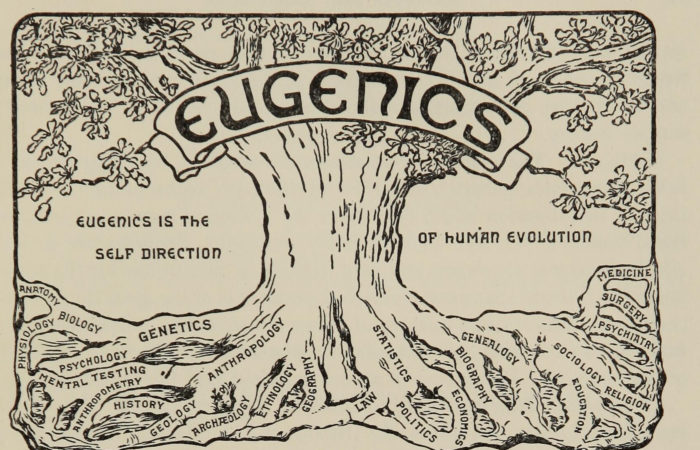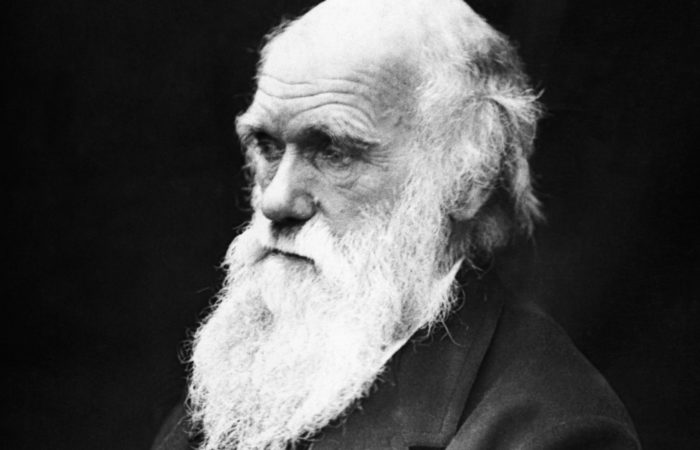
Eugenics
Eugenics
Eugenics was the science of breeding better humans based on Darwinian principles. It was supposed to allow humanity to take control of its own evolution by breeding a better race. In the words of Horatio Hackett Newman, a University of Chicago Zoology Professor, through eugenics “man might control his own evolution and save himself from racial degeneration.” The term itself was coined by Charles Darwin’s cousin Francis Galton. “Positive eugenics” focused on encouraging those deemed the most fit to reproduce more, while “negative eugenics” focused on curtailing reproduction by those deemed unfit, including mental defectives, criminals, and non-whites.
Eugenics was widely embraced by leading evolutionary biologists, doctors, and politicians in the early years of the twentieth century. Promoters of eugenics in America included scientists at Harvard, Princeton, Yale, Columbia, Stanford, the University of Chicago, the National Academy of Sciences, and many other institutions.
For more information:
Darwin Day in America by John G. West (Book)
The Eugenics Archive (Website)
Charles Darwin
Charles Darwin is best known for formulating the theory of evolution by natural selection. The heyday of eugenics came after Charles Darwin’s death, but Darwin helped supply the rationale for eugenics in various passages in his book The Descent of Man, where he warned that “civilized” societies were undercutting natural selection and destroying themselves by saving the sick, helping the poor, vaccinating people against small-pox, and allowing their worst members to breed. Darwin did go on to caution that humans can’t follow the dictates of “hard reason” in such cases without undermining their “sympathy… the noblest part of our nature.” At the same time, he expressed hope that natural selection would in fact continue to eliminate those he considered a drag on society. Scholars continue to debate how much support Charles Darwin lent to Social Darwinism. Charles Darwin’s son Leonard later became the Chairman of the British Eugenics Society for many years, and he spoke at the Second International Congress of Eugenics in New York City in 1921.
American Museum of Natural History
The American Museum of Natural History in New York City remains one of the world’s leading natural history museums. During the early part of the twentieth century, it was also one of the nation’s leading proponents of eugenics. Under the direction of paleontologist and eugenist Henry Fairfield Osborn, it even hosted the Second International Congress of Eugenics in 1921 and the Third International Congress of Eugenics in 1932.
Eugenics Record Office
Founded by National Academy of Sciences geneticist Charles Davenport, the Eugenics Record Office was one of the most virulent American eugenics organizations. It was established in 1910 at the Cold Spring Harbor Laboratory, still one of the world’s preeminent biological research institutions.
For more information:
“When Racism Was a Science” (Article/New York Times)
Nazi Eugenics
Drawing on the ideas of Social Darwinism, Nazi racial theory dehumanized the handicapped, Jews, and many other groups as drags on German society. Most people know that the Nazis exterminated more than six million Jews. But they also enacted an extensive eugenics program, which led to the sterilization of hundreds of thousands of people and the gassing of the mentally handicapped as well. Nazi eugenics efforts received praise from leading supporters of eugenics in America.
For more information:
“Victims of the Nazi Era: Nazi Racial Policy” (Article/US Holocaust Memorial Museum)
“The Role of Darwinism in Nazi Racial Thought” (Article/German Studies Review)
“Hitler, Darwin and the Holocaust: How the Nazis Distorted the Theory of Evolution” (Article/Salon.com)
“Medical Science Under Dictatorship” (Article/New England Journal of Medicine)
“GERMANY: Praise for Nazis” (Article/Time)
“Eliminating the Inferior: American and Nazi Sterilization Programs” (Article/Institute for the Study of Academic Racism)
Opposition to Eugenics
Some scientists became skeptical of eugenics as time went on, but much of the opposition to eugenics came from traditional religious communities, especially Catholics and some evangelical Protestants. In 1930, Pope Pius XI issued the encyclical Casti Connubi, which condemned eugenics. By contrast, more theologically liberal clergy often supported eugenics.
“Catholics and Eugenics: A Little-Known History” (Article/National Catholic Reporter)
Preaching Eugenics: Religious Leaders and the American Eugenics Movement by Christine Rosen (Book)
“Interview with Christine Rosen” (Interview/Center for Bioethics and Culture Network)





